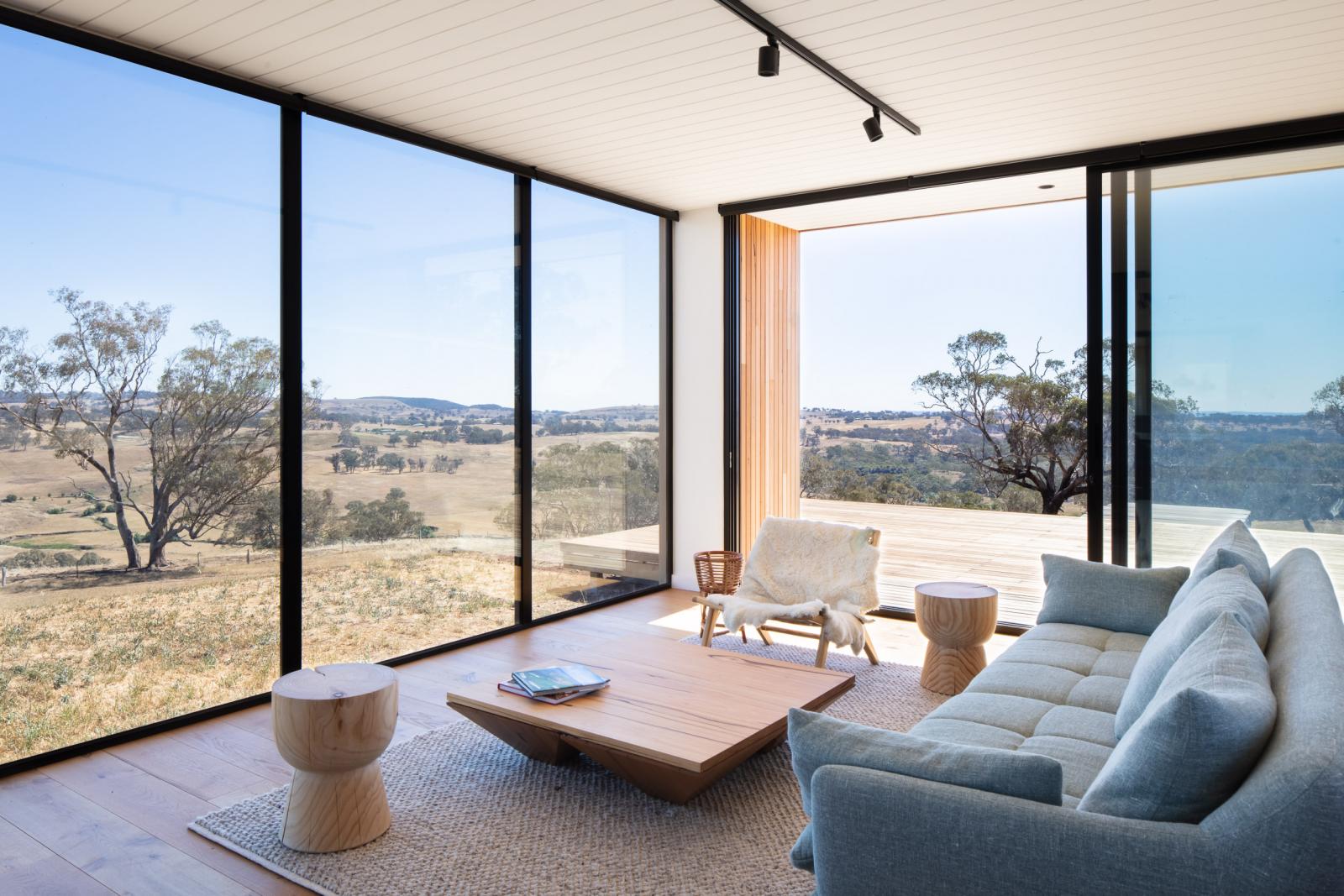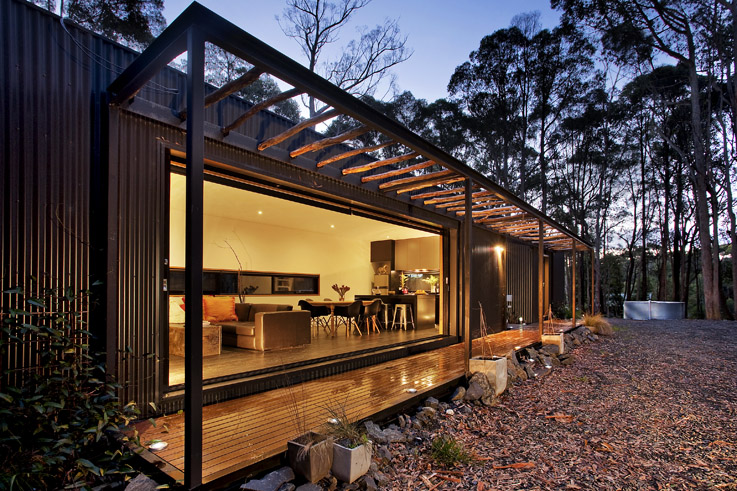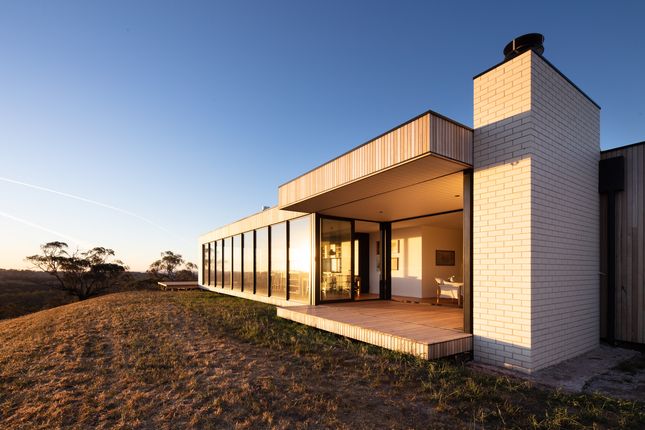After World War Two, pre-assembled modular homes - also known as kit or pre-fabricated housing - solved a national dwelling shortage and also delivered cheap yet functional living.
As soon as prosperity returned in the 1960s, people went back to bricks and mortar homes, entirely constructed on-site, as a sign of prosperity.
But now modular homes are back in vogue - particularly among people aged 50 and up - and this time they are permanent, solid, slick and stylish abodes that embrace high-quality finishes.
Best of all, they can be built and occupied in as little as eight weeks from site preparation, and have the potential to be up to 20 per cent cheaper.
Downsizing.com.au has decided to have a look at the push to build modular housing.
What are modular homes?
Often known as prefabricated homes, pre-finished homes, pod homes and sometimes kit homes, modular homes are all manufactured off-site in a factory, either in part or in their entirety. This differs to traditional homes, which are constructed on-site.
We spoke to Damien Crough, Executive Chairman of prefabAUS, the industry body representing the prefab building sector, to understand the popularity of prefab homes.
"The term prefab is an umbrella term that encompasses all the different ways of building, using a modular methodology,” Mr Crough said.
“One way is volumetric construction, where beautifully finished architectural homes are made in the factory and then delivered to the site.”
"Then there's panelised construction where you bring in completely (factory) finished wall panels and then assemble on-site."
The quality and cost of each option are broadly the same. However, there are some circumstances where one option may be more suitable than the other.
"It depends on the site, logistics and access. One of the challenges with volumetric construction is that you have very large components transported to the site on big trucks. If you don't have easy site access, then volumetric may not be the right solution," explained Mr Crough.

Why are modular homes popular again?
In part, the renewed enthusiasm for modular housing has come about on the back of the rush to regional areas - including over 50s looking for a tree or sea change - which has been the hallmark of the COVID-19 era.
According to the Australian Bureau of Statistics, coinciding with COVID restrictions, 11,200 people moved from Australia's capital cities to regional areas in the September quarter of 2020.
For those considering downsizing to a regional area, including after buying a block of land, modular housing can be a cost-efficient and fast way to create your perfect environment and incorporate bespoke features that will help you to age in place.
How is it best planning for a new modular home?
Mr Crough suggests working backwards from the building site conditions to identify the best solution for your property, including looking at the site conditions and the accessibility to identify whether a volumetric or panelised home is best.
Mr Crough was quick to point out the approval process is not dissimilar to a house built on-site: "I think it is pretty straightforward. There's not really anything different to a standard build, and most of the modular manufacturers will take the client through that process."
The new generation of modular homes uses lighter and stronger structural materials with high performing thermal and acoustic properties, which ultimately creates lower energy costs over its lifetime.
University of Melbourne figures estimate wastage is reduced by up to 80 per cent, with increased recyclability and reusability of materials, and the building process has a much lower carbon footprint. Over the life of the building, it’s estimated to be as much as 30 to 40 per cent.
The factory process also delivers more exacting standards and less wastage than an on-site build. Technically, the building costs should be more cost-effective (15-20 per cent cheaper), but Mr Crough explains that it is not always the case.
"It depends on client needs and whether they want an architecturally designed home, because a lot of the modular manufacturers are architects,” he said. “So there's very much a focus on the design.”
"It comes down to the client. If they just want to build a standard home on a particular budget, then they'll find the modular manufacturer that can provide them with a solution.
“And again, if they want a really high performing architecturally designed, beautiful, expensive home, modular manufacturers that can provide that solution to them."
There has been a real growth in the popularity of modular houses, which has been attributed to several reasons, explained Mr Crough: "I think the boom has been happening in modular for probably the last five years. Our (prefabAUS) manufacturer members are all very busy. Typically, their business is growing, around 10 to 15 per cent per annum."
"That's probably a combination of factors. The general public is becoming a lot more educated on what they want and the benefits of the high performing home.
"On-site building takes a long time. To order your house and have it built in a factory and delivered in weeks, instead of six months, is very attractive. Buyers can walk through the factory and see their home as it's being built."

Who is buying modular homes?
The modular industry attracts mature buyers, rather than first home builders, according to Mr Crough. "The feedback from members recently is that the buyer demographic is 40 to 70-year-olds,” he said.
"There is also a big emerging market in rental communities for over 55s.
“The land lease rental model is gaining prevalence over the traditional chattel sale due to the flexible lease terms and minimal entry. So they'll build the whole community, put in all of the modular homes, and then just rent them."
Comments from our CEO
Downsizing.com.au CEO Amanda Graham said modular houses had evolved as a stylish and worthy option that can meet various budgets and remove some of the stress from a lengthy on site build process.
“It is exciting to see this new housing model, which appears to be very popular among over 50s who’ve secured a parcel of land and are now looking at a tree change or sea change,” Ms Graham said.
“These over 50s are looking for a home that can be built quickly and without unnecessary expense, but also looks and feels stylish.
“Over 50s can also design these homes with offices so they can easily work from home, including as part of a transition to retirement plan. This is in line with the trend of more people working from home thanks to COVID-19.”
Downsizing.com.au has Australia’s best range of retirement and downsizing-friendly property - start your search here.


